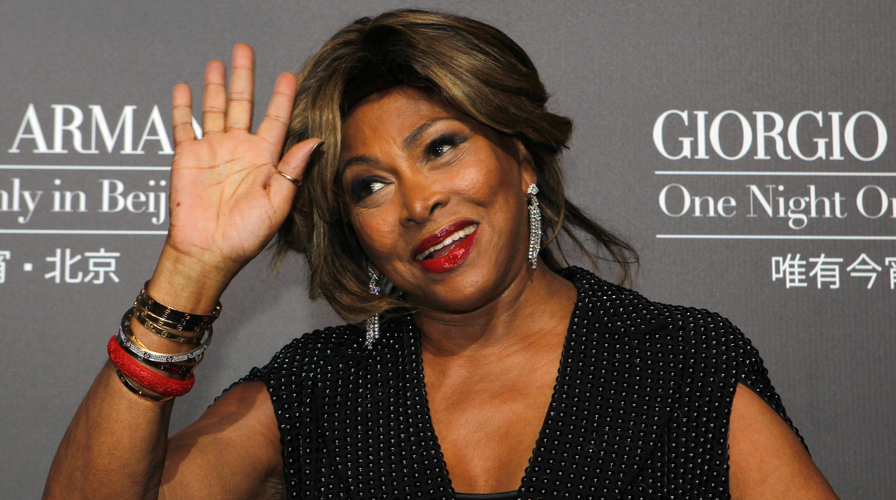Tina Turner, Queen of Rock; dead at 83
Queen of rock and roll Tina Turner dead at 83
Tina Turner was known for her songs such as ‘Proud Mary’ and ‘I Don’t Wanna Lose You’
Tina Turner has died at 83.
The Queen of Rock ‘n’ Roll’s death was announced on Instagram Wednesday. Turner died Tuesday, after a long illness in her home in Küsnacht near Zurich, Switzerland, according to her manager. She became a Swiss citizen a decade ago.
“It is with great sadness that we announce the passing of Tina Turner,” the statement on social media said. “With her music and her boundless passion for life, she enchanted millions of fans around the world and inspired the stars of tomorrow. Today we say goodbye to a dear friend who leaves us all her greatest work: her music. All our heartfelt compassion goes out to her family. Tina, we will miss you dearly.”
A LOOK AT TINA TURNER’S EMPIRE

Tina Turner has died after a long illness. (Getty Images)
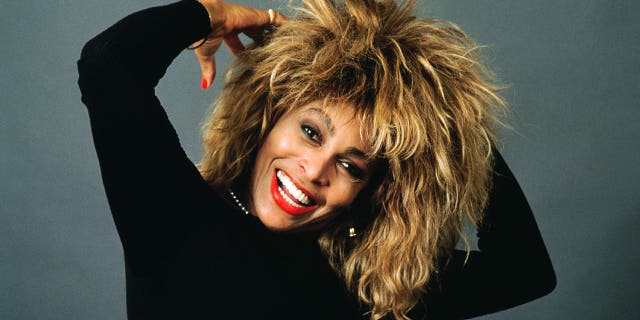
Tina Turner was known as the Queen of Rock ‘n’ Roll. (Getty Images)
With admirers ranging from Beyoncé to Mick Jagger, Turner was one of the world’s most successful entertainers, known for a core of pop, rock and rhythm and blues favorites: “Proud Mary,” “Nutbush City Limits,” “River Deep, Mountain High,” and the hits she had in the ’80s, among them “What’s Love Got to Do with It,” “We Don’t Need Another Hero” and a cover of Al Green’s “Let’s Stay Together.”
Throughout her career, Turner sold more than 150 million records. She earned 11 Grammys and was inducted into the Rock and Roll Hall of Fame in 1991. She was inducted again and honored for her solo career in 2005.
Turner launched her career in 1960 with the release of “A Fool in Love.” The song hit No. 2 on the Hot R&B Sides chart and No. 27 on the Billboard Hot 100.
Besides singing, Turner also has dabbled in acting. She landed her first role in 1975 with “Tommy” and would later appear in “Mad Max Beyond Thunderdome” alongside Mel Gibson.
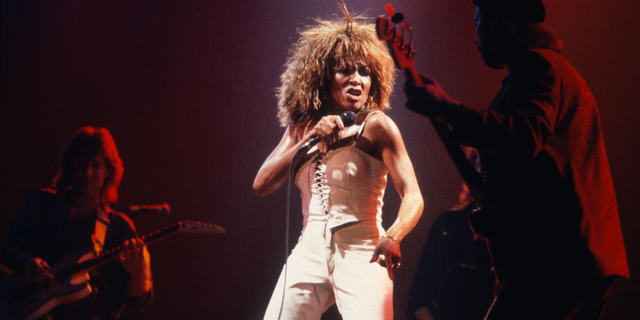
Tina Turner performing in Belgium on April 16, 1985. (Photo by Gie Knaeps/Getty Images)
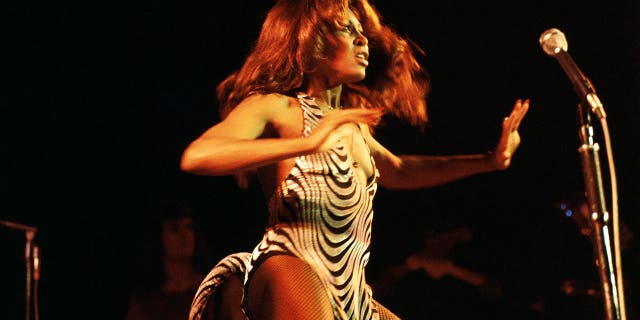
Tina Turner has won 11 Grammys. (Getty Images)
Turner’s music career began alongside Ike Turner – her first husband. The musician was only 17 years old when she met him. She eventually left Ike in 1976. She first spoke about the abuse she suffered behind closed doors in an article published by People magazine in 1981. Turner described the abuse as “torture” and claimed she was “living a life of death.”

Tina Turner met Ike Turner when she was 17 years old. (Getty Images)
A few years later she released a book.
Turner tied the knot with German music producer Erwin Bach in a lavish ceremony at their home on Lake Zurich in Switzerland on July 4, 2013, after dating for 27 years. Oprah Winfrey and Bryan Adams were on hand to witness the “Proud Mary” singer walk down the aisle wearing a green taffeta and black silk tulle Giorgio Armani dress, which was adorned with Swarovski crystals.
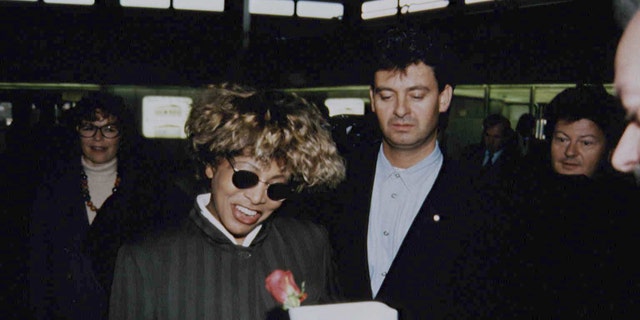
Tina Turner and Erwin Bach began dating in 1986. (Getty Images)
Turner told Winfrey it was “love at first sight” when she met Bach, who was assigned to pick her up from the airport before a concert some 35-plus years ago.
She explained in her documentary: “He had the prettiest face. You could not miss it. It was like saying, ‘Where did he come from?’ He was really that good-looking. My heart went ‘bu-bum.’ It means that a soul has met. My hands were shaking.”
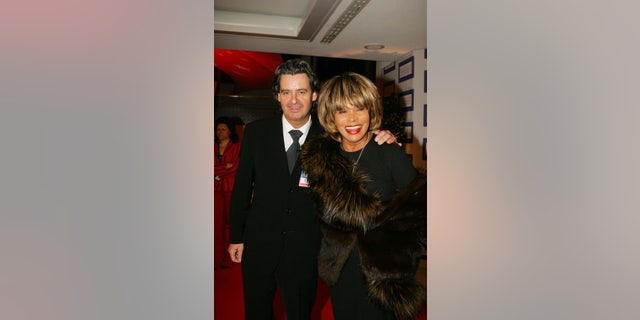
Tina Turner and Erwin Bach married in 2013. (Getty Images)
“It’s that happiness that people talk about,” Turner told the press at the time, “when you wish for nothing, when you can finally take a deep breath and say, ‘Everything is good.’” source
Legendary singer Tina Turner has died at 83
NEW YORK — Tina Turner, the unstoppable singer and stage performer who teamed with husband Ike Turner for a dynamic run of hit records and live shows in the 1960s and ’70s and survived her horrifying marriage to triumph in middle age with the chart-topping “What’s Love Got to Do With It,” has died at 83.
Turner died Tuesday, after a long illness in her home in Küsnacht near Zurich, Switzerland, according to her manager. She became a Swiss citizen a decade ago.
Few stars traveled so far — she was born Anna Mae Bullock in a segregated Tennessee hospital and spent her latter years on a 260,000 square foot estate on Lake Zurich — and overcame so much. Physically battered, emotionally devastated and financially ruined by her 20-year relationship with Ike Turner, she became a superstar on her own in her 40s, at a time when most of her peers were on their way down, and remained a top concert draw for years after.

With admirers ranging from Beyoncé to Mick Jagger, Turner was one of the world’s most successful entertainers, known for a core of pop, rock and rhythm and blues favorites: “Proud Mary,” “Nutbush City Limits,” “River Deep, Mountain High,” and the hits she had in the ’80s, among them “What’s Love Got to Do with It,” “We Don’t Need Another Hero” and a cover of Al Green’s “Let’s Stay Together.”
Her trademarks were her growling contralto, her bold smile and strong cheekbones, her palette of wigs and the muscular, quick-stepping legs she did not shy from showing off. She sold more than 150 million records worldwide, won 12 Grammys, was voted along with Ike into the Rock and Roll Hall of Fame in 1991 (and on her own in 2021) and was honored at the Kennedy Center in 2005, with Beyoncé and Oprah Winfrey among those praising her. Her life became the basis for a film, a Broadway musical and an HBO documentary in 2021 that she called her public farewell.

Until she left her husband and revealed their back story, she was known as the voracious on-stage foil of the steady-going Ike, the leading lady of the “Ike and Tina Turner Revue.” Ike was billed first and ran the show, choosing the material, the arrangements, the backing singers. They toured constantly for years, in part because Ike was often short on money and unwilling to miss a concert. Tina Turner was forced to go on with bronchitis, with pneumonia, with a collapsed right lung.
Other times, the cause of her misfortunes was Ike himself.
As she recounted in her memoir, “I, Tina,” Ike began hitting her not long after they met, in the mid-1950s, and only grew more vicious. Provoked by anything and anyone, he would throw hot coffee in her face, choke her, or beat her until her eyes were swollen shut, then rape her. Before one show, he broke her jaw and she went on stage with her mouth full of blood.
Terrified both of being with Ike and of being without him, she credited her emerging Buddhist faith in the mid-1970s with giving her a sense of strength and self-worth and she finally left in early July, 1976. The Ike and Tina Turner Revue was scheduled to open a tour marking the country’s bicentennial when Tina snuck out of their Dallas hotel room, with just a Mobil credit card and 36 cents, while Ike slept. She hurried across a nearby highway, narrowly avoiding a speeding truck, and found another hotel to stay.
“I looked at him (Ike) and thought, ‘You just beat me for the last time, you sucker,'” she recalled in her memoir.
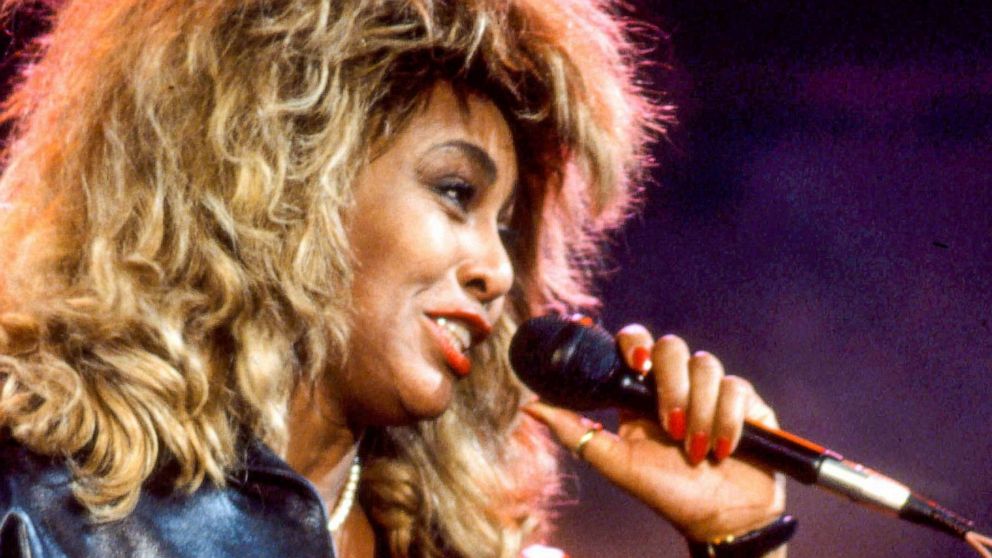
Turner was among the first celebrities to speak candidly about domestic abuse, becoming a heroine to battered women and a symbol of resilience to all. Ike Turner did not deny mistreating her, although he tried to blame Tina for their troubles. When he died, in 2007, a representative for his ex-wife said simply: “Tina is aware that Ike passed away.”
Little of this was apparent to the many Ike and Tina fans. The Turners were a hot act for much of the 1960s and into the ’70s, evolving from bluesy ballads such as “A Fool in Love” and “It’s Going to Work Out Fine” to flashy covers of “Proud Mary” and “Come Together” and other rock songs that brought them crossover success.
They opened for the Rolling Stones in 1966 and 1969, and were seen performing a lustful version of Otis Redding’s “I’ve Been Loving You Too Long” in the 1970 Stones documentary “Gimme Shelter.” Laurence Fishburne and Angela Bassett gave Oscar-nominated performances as Ike and Tina in the 1993 movie “What’s Love Got to Do with It,” based on “I, Tina,” but she would say that reliving her years with Ike was so painful she couldn’t bring herself to watch the movie).
Ike and Tina’s reworking of “Proud Mary,” originally a tight, mid-tempo hit for Creedence Clearwater Revival, helped define their assertive, sexual image. Against a background of funky guitar and Ike’s crooning baritone, Tina began with a few spoken words about how some people wanted to hear songs that were “nice and easy.”
“But there’s this one thing,” she warned, “you see, we never ever do nothing nice and easy.
“We always do it nice — and rough.”
But by the end of the 1970s, Turner’s career seemed finished. She was 40 years old, her first solo album had flopped and her live shows were mostly confined to the cabaret circuit. Desperate for work, and money, she even agreed to tour in South Africa when the country was widely boycotted because of its racist apartheid regime.
Rock stars helped bring her back. Rod Stewart convinced her to sing “Hot Legs” with him on “Saturday Night Live” and Jagger, who had openly borrowed some of Turner’s on-stage moves, sang “Honky Tonk Women” with her during the Stones’ 1981-82 tour. At a listening party for his 1983 album “Let’s Dance,” David Bowie told guests that Turner was his favorite female singer.
More popular in England at the time than in the U.S., she recorded a raspy version of “Let’s Stay Together” at EMI’s Abbey Road studios in London. By the end of 1983, “Let’s Stay Together” was a hit throughout Europe and on the verge of breaking in the states. An A&R man at Capitol Records, John Carter, urged the label to sign her up and make an album. Among the material presented to her was a reflective pop-reggae ballad co-written by Terry Britten and Graham Lyle and initially dismissed by Tina as “wimpy.”
“I just thought it was some old pop song, and I didn’t like it,” she later said of “What’s Love Got To Do With It.”
Turner’s “Private Dancer” album came out in May 1984, sold more than eight million copies and featured several hit singles, including the title song and “Better Be Good To Me.” It won four Grammys, among them record of the year for “What’s Love Got to Do With It,” the song that came to define the clear-eyed image of her post-Ike years.
“People look at me now and think what a hot life I must have lived — ha!” she wrote in her memoir. source

